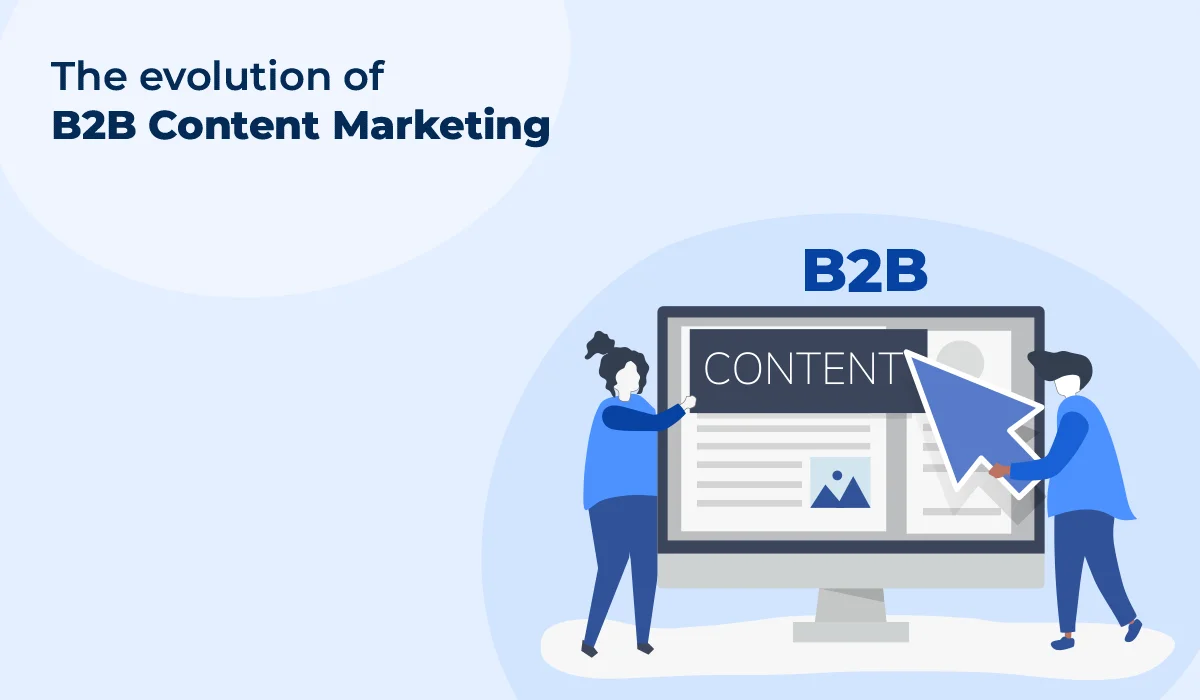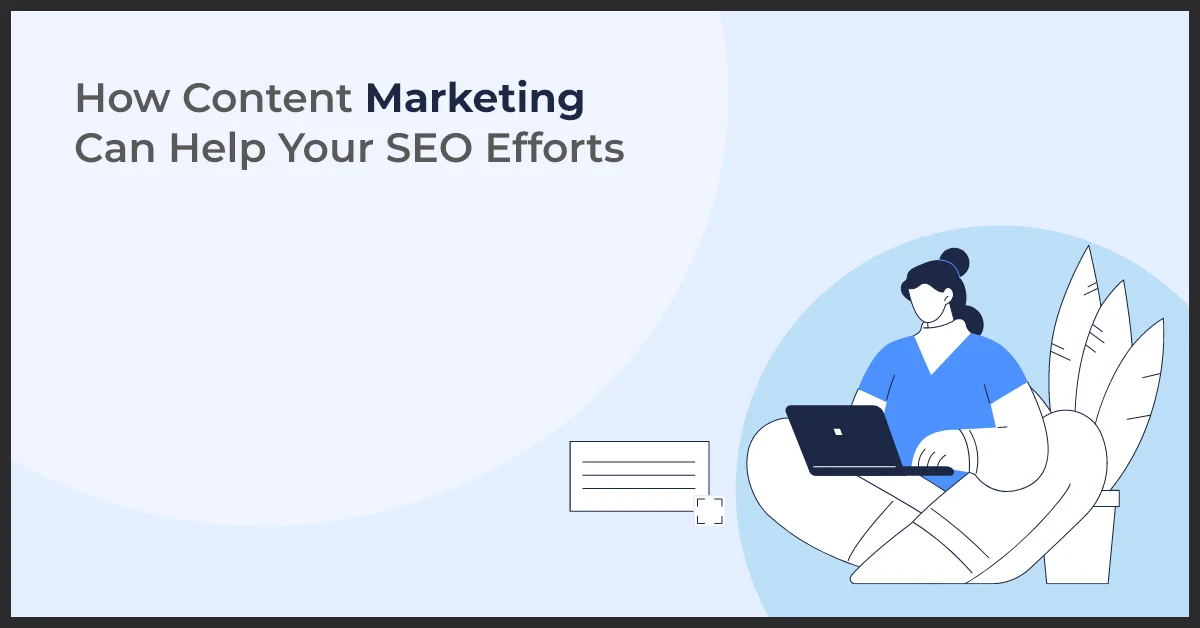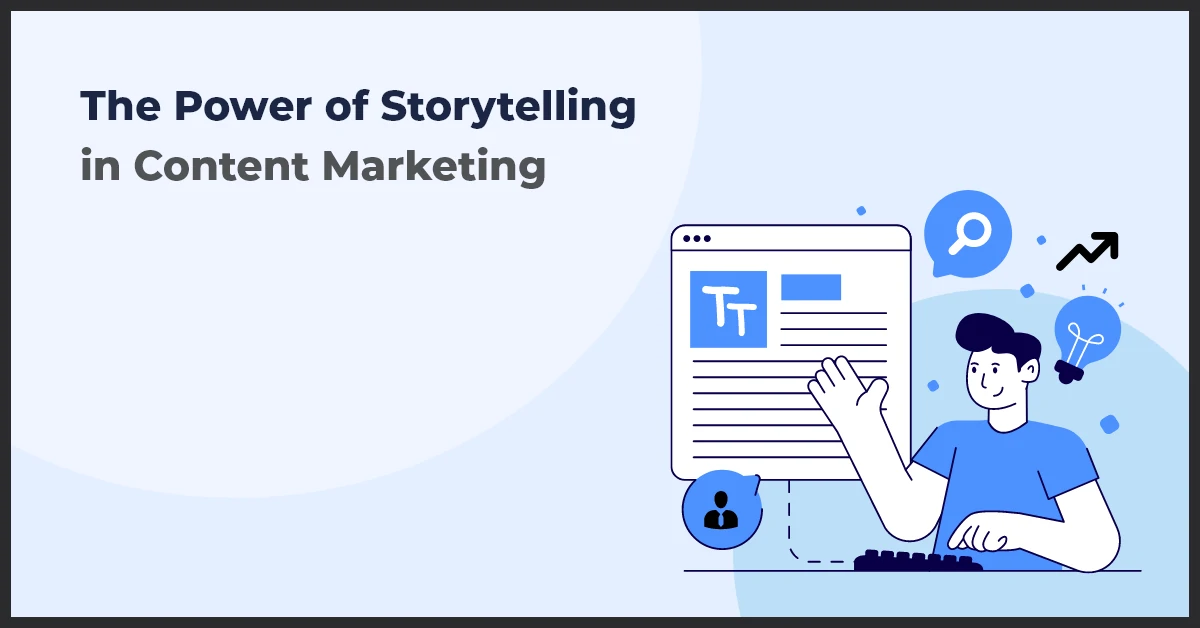How the B2B Content Marketing Landscape Is Evolving

Published on: November 1, 2022
Updated on: March 20, 2024
353 Views
- Content Marketing
11 min read
The well-known brand GE shared a story about how its LED lamps helped grow lettuce for a Japanese firm. The story went viral on Reddit as an example of agri-industrial innovation. GE, without directly being mentioned, used it to validate their stronghold over innovation in their field. How? By using this story as part of their content marketing strategy.
This new approach to content is how B2B content marketing is emerging as the lines between B2B and B2C marketing get blurred with every passing day.
Let us explore how this new field of content marketing is shaping up in today’s predominantly digital media realm.
What Is B2B Content Marketing?
The Content Marketing Institute defines its eponymous concept as a “strategic marketing approach focused on creating and distributing valuable, relevant and consistent content to attract and retain a clearly-defined audience – and, ultimately, to drive profitable customer action.”
This definition tells us a lot about the things that lead to sound and successful content marketing:
Your marketing approach needs to be strategic. It means whatever content is posted online or elsewhere has to be a part of an overall strategy. In other words, you must clearly understand your goals and how your content will help you achieve them.
Your audience has to be clearly defined. Think beyond set categories or mere demographics. Try to understand their wants, needs, interests, questions, etc., to express how your product/service is essential to their life.
Finally, your content must be valuable, relevant, and consistent. Unpacking each of these terms here:
Valuable: Whenever you post content–be it a blog, video, podcast, etc.–make it informative, entertaining, and educational. Whoever engages with it should feel they are getting something worthwhile.
Relevant: As mentioned earlier, your content must address the audience’s needs and interests. Demonstrate that you are a trustworthy, reliable source with the right answers.
Consistent: This refers both to the schedule at which content is posted as well as the voice, tone, and style, which makes your audience recognize your brand.
Content in the Current B2B Landscape
The B2B market no longer rides on the steady stolid approach of the past. Today, it is a highly complex affair with increasing buyer sophistication. 74% of customers research and take time to make their purchases. Interestingly, the growing number of millennials in research roles in organizations and their comfort with digital tools and media is partly responsible for this change.
With such an evolving customer mindset, your marketing strategy can neither rely on an old set formula of customer outreach nor the same set of formulaic content. Your content marketing approach must ensure they stay connected through different platforms, engage with potential customers, and have the necessary tools like AI and Machine Learning.
Previously, there was no overlap in the marketing and sales funnel as the responsibilities of each team were separate. Marketing initiated the awareness and interest phase, while sales exclusively handled the funnel's consideration, intent, evaluation, and purchase phases.
Today, there is an overlap in the intent and evaluation phase as sales and marketing have become a hybrid effort with shared and synced responsibilities. What this means is most buyers’ journeys now start online. The implication: digital content plays a crucial role in the decision-making process.
B2B companies investing in content marketing are seeing success, with 85% reporting increased business exposure.
Additionally,
- 67% of buyers rely more on content for purchase decisions than a year ago.
- Those who blog generate 67% more leads per month compared to those who do not.
- 81% of B2B buyers research online communities and blogs before purchasing.
Simply put, the current B2B landscape is now harnessing the power of content marketing driven by these objectives:
- To produce more and better leads
- To increase brand visibility
- To exhibit thought leadership
So how are these changes getting implemented? The next section looks at it in detail.
Benefits of Mixing Up Content Marketing
Mixing and evolving your approach to your marketing content will surely keep your audience engaged.
The benefits of such a strategy include the following:
An Engaged Audience
The biggest missed opportunity happens from being too cautious with your content. Using the same content over and over will only make your audience lose interest. Creativity and boldness with your B2B content allow you to explore new avenues and discover the content your audience connects with most.
An Innovative Organization
The more you explore new strategies, the more your content will diversify. Consequently, you will need more innovative ways to explain your brand and products. Result? Your audience will indeed sit up and notice.
Easy Content Creation
Content marketing is not about reinventing the wheel. Even old content comes in handy, especially when it has enough substance.
By repurposing your existing content, you emphasize the features and benefits of your company or products in new exciting ways. That blog article you wrote? Make it a social post. The webinar you hosted? Make it an ebook.
The advantages of working with content allow for various forms to get your message across.
The following section explores a few of those.
Different Content for Implementation
Video
As future marketing trends indicate, video has slowly overtaken every other content form over the years. It has become a dominant content form, specifically on social media platforms. Videos have immense possibilities for information, entertainment, and education. Not surprisingly, consumers, too, want to see more videos from brands.
Podcast
A podcast is another upcoming medium to experiment to raise your brand awareness. It can be used to establish your influence in the industry by presenting your team as experts and thought leaders.
Paid Media
The 2019 Content Marketing Institute research found that 71% of the most effective B2B content marketers rely on paid media to distribute content. If you currently are not using paid media, you could be missing out on opportunities to engage with targeted audiences that might be interested in your products.
Innovative Owned Media
Based on your resources, this could include any new initiatives like interactive PDFs, social media features, and infographics – all different types of content bound to boost audience engagement.
You are already familiar with the significance of content for B2B content marketing and the different kinds of content you can develop. The next section explores tips on how this new content strategy can be effective and implemented for your organization.
Tips for Effective Content Marketing
Below are the seven aspects that lead to maximum impact from your content:
1. Have a Strategy
A lot of thought must go into content creation before you put it forth for your customers. Your strategic approach to content should have the following:
- Be clear about the goals that you want to achieve with content marketing and develop your tactics accordingly. It could be anything---nurturing leads, brand awareness, etc.
- Leverage the connection between your organization and SEO keywords through content.
- Understand the various personas of the different audiences and influencer groups you are trying to reach.
- Know the kind of answers, information, and solutions your audience seeks from your content that provide them value.
- Identify the action you want the end user to perform and create content around this desired CTA.
- Maintain a single site, like a website, for your content that your customers and potential customers can reach.
- Reach out to your customers via newsletters, social media, press releases, etc. This will significantly increase your content outreach.
- Identify different sources of content (both internally and externally) to continually put forth content that will make your content marketing strategy more than a one-off thing.
2. Reach Out to Different Content Consumers
Typically, B2B buyers comprise three types of consumers, with each needing a specific kind of content:
- Researchers: They desire the broadest content, such as industry reports and trends influencing the market.
- Influencers: They want thought leadership content, summarized content, etc.
- Decision makers: They want to be updated and informed through research and analyst commentary. They also seek quick access to data to make an informed decision.
3. Provide Value Throughout the Customer Lifecyle
The goal of content marketing should be to provide value to your audience at every stage of the funnel. For instance, someone looking for a product discovers you through a blog, social media posts, and other content during their research. On the other hand, a customer who is now your advocate uses case studies and ongoing training to talk about your product.
4. Be Intentional
Content should always have a purpose. Make your content intentional by identifying the area your audience cares about and wants to know. Compelling content has the following characteristics:
- Pays attention to the needs, wants, and interests of their audiences
- Is helpful rather than hype-driven
- Answers questions and provides solutions
5. Drive SEO
Search Engine Optimization (SEO) allows for the best user experience possible. How? Search engines provide visibility to only those sites that offer relevant information. Its algorithm evolves to reward those with fresh, quality content.
So, what kind of content drives SEO in your favor?
Create for a specific audience: Your content should keep its target audience in mind. You can answer the problems your audience looks for online, aligning your products/services to their needs and grabbing their attention through specific topics, keywords, and recommendations. This raises your chances of appearing in related searches.
Sound natural: SEO should not result in creating content merely for the sake of keyword search.
Include long-form content and high-authority references: Long-form content is crucial as it allows for implementing co-occurrence without sounding repetitive. Co-occurrence refers to the frequency in which terms or related groups of words are found in a given piece of writing.
The other feature of your writing is ensuring you have high-authority sources. These can be anything from credible websites well-known and respected in your fields or those from government and research organizations.
6. Use Multiple Channels for Dissemination
It is not just about writing good content but also making sure people see it. You can bring different audiences to the assets through owned, paid, and earned content promotion.
Owned content promotion refers to posting content through sources controlled by your organization. Such content includes social media posts, RSS feeds, blog subscriptions, etc. Most often, the audience is already familiar with your brand as they are its opt-in consumers.
Paid content promotion refers to ads across different channels. This way, you can reach new audiences with your content. Such content includes sponsored articles, newsletter content, and social updates.
Earned Content Promotion, also known as digital PR, is when third-party publishers or influencers engage with your content and share it through their channels. This kind of promotion is earned and takes time, credibility, and consistency, along with, of course, valuable content. News and editorial coverage, retweets/reposts are some examples.
7. Measure and Quantify
The value of your content is determined by its ability to fulfill goals and objectives and effectiveness across channels.
Apart from your content marketing objectives, track and measure the following KPIs:
- Views and reach
- Engagements like Shares and Likes
- Traffic produced by content
- Share of voice ratio vis-a-vis competitors
- Leads generated
- The conversion rate for email sign-ups and other subscriptions
Conclusion
As customers become more enlightened and aware through research, B2B companies are re-evaluating their content marketing strategy to stay current and relevant. These organizations are aware of the rapidly changing landscape of B2B marketing and find ways to keep their audience engaged. Customers now demand content that answers their questions, catches their eye, and provides solutions.
Growth Natives can help develop a strategy for your business in tandem with these evolving B2B content marketing trends. Write to us at info@growthnatives.com to shoot your queries or know more.



